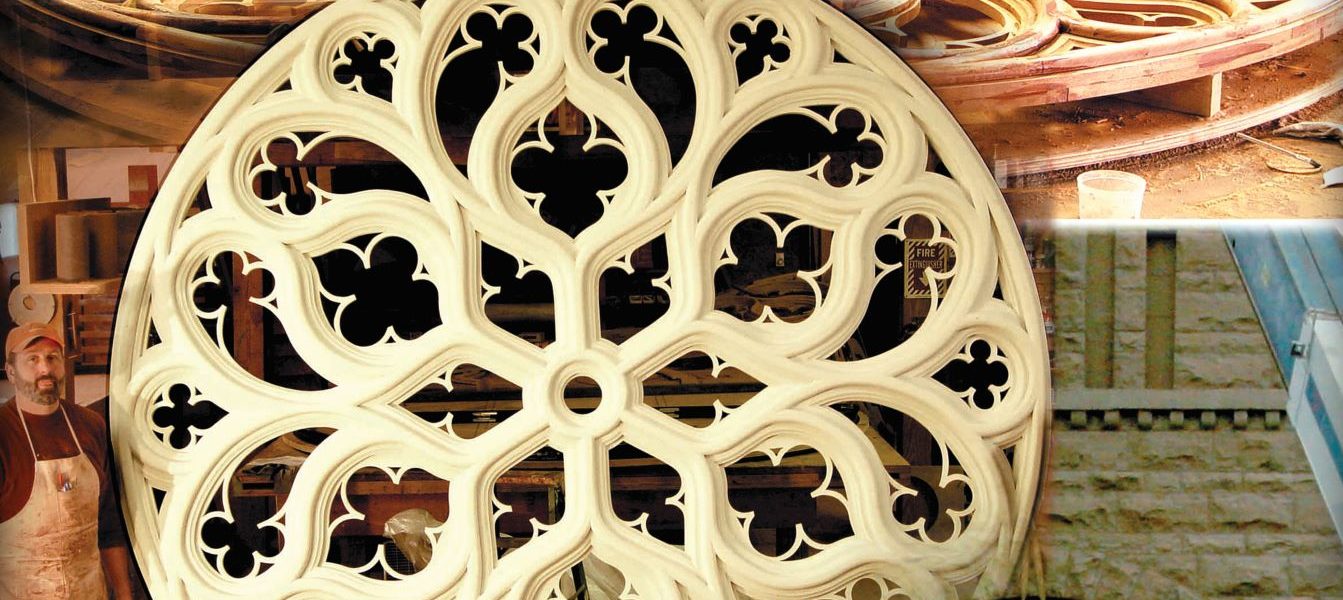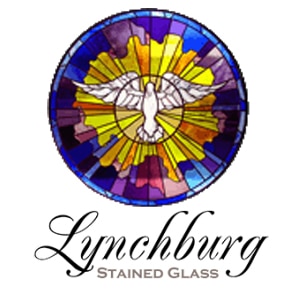This article originally appeared in the May 2012 issue.
By Ron Bovard
Ron Bovard is author of the book Windows for the Soul, published by Waddell Publications, holder of the US Patent for 21 aspects of glazing and framing systems designed for the preservation of stained glass windows, and owner of Bovard Studio, Inc., www.bovardstudio.com.
The 1996 study on the effects of improperly designed protective covering on stained glass church windows by the National Preservation Center concluded that more damage has been done by improperly designed exterior glazing than by all of the fires, storm damage, and vandalism combined.
Still, new stained glass church windows are being installed into improperly designed glazing systems, and our existing stained glass heritage is being covered up by improperly designed protective covering systems that, over the long term, will shorten the life of our religious stained glass heritage.
The reason for this damage by unvented or improperly vented glazing systems over stained glass windows is entrapped condensation and heat build-up from solar gain. As with any single glazed window, a stained glass window will collect condensation on the interior side during certain climate conditions.
When a storm window or a non-insulated protective glazing is added to the front of any window, including stained glass windows in a non-vented system, the condensation collects on the interior side of the protective covering.
In a non-vented system, this condensation creates hygroscopic moisture trapped between the protective covering and the stained glass window. The dust particles in this space become like tiny permanently moist sponges, which are an ideal environment for bacteria to grow. The bacteria grow and secrete acids that attack the lead came and the stained glass and speed up the rotting of the wood window frames or oxidation on metal frames.
The stained glass is dark compared to the clear glass and collects solar gain much as that of a black car as compared to a white car. The heat from the solar gain is trapped between the stained glass window and the protective covering in a non-vented or incorrectly vented system.
In The National Preservation Center’s study on a 20 degree January day, the recorded air temperature in the space between the stained glass window and the protective covering exceeded 150 degrees Fahrenheit. This exaggerates the expansion and contraction cycles that tear apart all building materials, including stained glass windows and their window frames.
The findings of this study are that if you want protective covering on your stained glass windows, you need one square inch of venting on the top and bottom of the stained glass window’s protective covering installation for every 16 square feet of stained glass. This allows the heat build-up to escape and for the air space between the protective covering and the stained glass window to dry out between condensation cycles.
Why put protective covering on stained glass windows at all?
If you are in a desert or an arid climate, there is probably no need for protective covering unless you are in an area subject to a high rate of vandalism or concerned about storm damage. In other areas of the country, we place protective covering on church stained glass windows because air infiltration and water from condensation or wind-driven rain are no longer accepted inside of our buildings.
In earlier times (for example, in European cathedrals and churches), interior condensation collection pans worked like interior gutters and would collect the condensation and wind-driven rain that leaked through the stained glass windows as the glazing cement packed between the flanges of the lead came to waterproof the stained glass window began to deteriorate.
In a large window, there were sometimes small holes made from the interior condensation collection pan to the exterior of the bottom of the window that would drain the water to the exterior of the building. In elaborate church architecture of the great cathedrals, this would sometimes drain out of a gargoyle’s mouth.
Properly designed vented protective covering keeps water out of the interior of your church and allows the heat build-up to escape. Protective covering also stops air infiltration that stained glass windows are noted for when the glazing cement between the flanges of the lead came and stained glass starts to deteriorate from normal expansion and contraction cycles or normal aging.
In new construction or when replacement frames are required, new wood or thermal barrier aluminum frames combined with insulated glass create a weatherproof and thermally efficient glazing system. These still need to be vented to the interior to prevent excessive heat build-up from solar gain. Insulated glass removes the condensation issue.
The new Low-E coated glazing systems are not designed to have a barrier such as stained glass between the Low-E glass and the interior of the building. Some coatings like those used in moderate to hot climates use Low-E coatings that reflect the heat to the exterior of the building all year long.
The polarized coating used in climates with warm winters and hot summers allow the heat to collect inside the building when the sun is low in the sky in the winter. In the summer when the sun is high in the sky, the heat is reflected off of the Low-E glass keeping the interior of the building cool in the summer and warm in the winter.
When stained glass is installed in front of the Low-E glass in this type of installation, the heat becomes trapped in the space between the Low-E glass and the stained glass window in an exaggerated amount.
In some installations, this can cause the Low-E glass to crack because of the heat differential between the Low-E glass’s edge under the glazing stops that is cool and the center of the Low-E glass pane that is hot. With Low-E glass, it is especially important to use an interior vented framing system for the stained glass window installation to prevent excessive heat build-up that can damage both the stained glass and the Low-E glass.
American churches are blessed with a rich stained glass heritage that, as stewards of our churches, we must preserve for our children and our grandchildren.



















